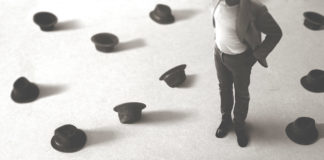How to critically evaluate a text
Almost a century ago, writer Virginia Woolf noticed people’s tendency to approach books “with clouded and divided minds, asking fiction to be true, poetry to be false, biographies to be flattering and history to chime with prejudices.”
Circular arguments: a vicious cycle of faulty logic
A circular argument is an argument forming part of a thesis which has not been established, but still needs to be argued for.
There is no such thing as absolute truth or absolute values. True or false?
By their very complexity, situational moral decisions demonstrate that there is an absolute good that we seek. Moral principles work together for the absolute good.
How to cope with manipulation
Many of us probably know at least one manipulative person — or perhaps we’ve even caught ourselves falling into that category. But do we really know when this tendency to control or influence others becomes harmful? And more importantly, how can we deal with manipulative people?
Enchanting words | When deductive thinking becomes the logic of the masses
It is crucial to realise that while words can be seductive and magnetic, they can also put us in great danger if we let ourselves be carried away by their charms, driven by emotional impulses without reason.
How to study the Bible properly
Do your best to present yourself to God as one approved, […] who correctly handles the word of truth. (2 Timothy 2:15)
Appeal to popularity. What explains the popularity of an error?
When we consider that a conclusion is founded only if a lot of people consider it true, we fall into the trap of the argumentum ad populum or the appeal to popularity.
Appeal to ignorance: Why it is useless to hide behind your finger
The appeal to ignorance (argumentum ad ignorantiam) is an error in thinking which argues that a conclusion is true because there is no evidence against it, or that a conclusion is false because there is no evidence in its favour.
The applications and pitfalls of critical thinking
Critical thinking is not a cure-all, but it proves very useful in dealing with, clarifying, and solving some decision-making problems, as well as the thought and belief disputes which occupy our minds.
The false analogy: when the apple insists on being a pear
The false analogy or the faulty analogy consists of the incorrect use of the analogy argumentative scheme without first meeting the requirements of a correct comparison.
In the world of “what if” | Why we are drawn to counterfactual thinking
The ability to imagine alternatives to events that have already occurred distinguishes humans from other creatures and machines—artificial intelligence has not yet succeeded in creating a device that can devise counterfactual scenarios. The fact that we can travel in an imaginary time and rewrite our actions and their outcomes can prove to be an advantage or can lead to dysfunctional emotional and cognitive...
The anatomy of belief: Part 1 | When reason becomes just another emotion
Western societies pride themselves on their access to information. Compared to our predecessors, we seem to be the most informed generation to have ever lived on Earth. However, paradoxically, the more data we have access to, the harder it is to determine what is true and what is false.
Erosion of trust | The ultimate effect of conspiracy theories
From television stories to personal experiences, we live in a world where honesty seems to be an increasingly rare commodity and suspicion and scepticism become protective shields.
Accurate statistics and faulty interpreters
Even the most rigorously researched statistics are not immune from misinterpretation, and they can often be used in a way that obscures the truth.
The problem with chronic desiderative thinking
“Yeah, I understand what you’re saying about Christianity. I’ve been there, a long time ago, but now that I’ve moved on, I have a different relationship with the universe and things are going much better for me on all levels.”


























